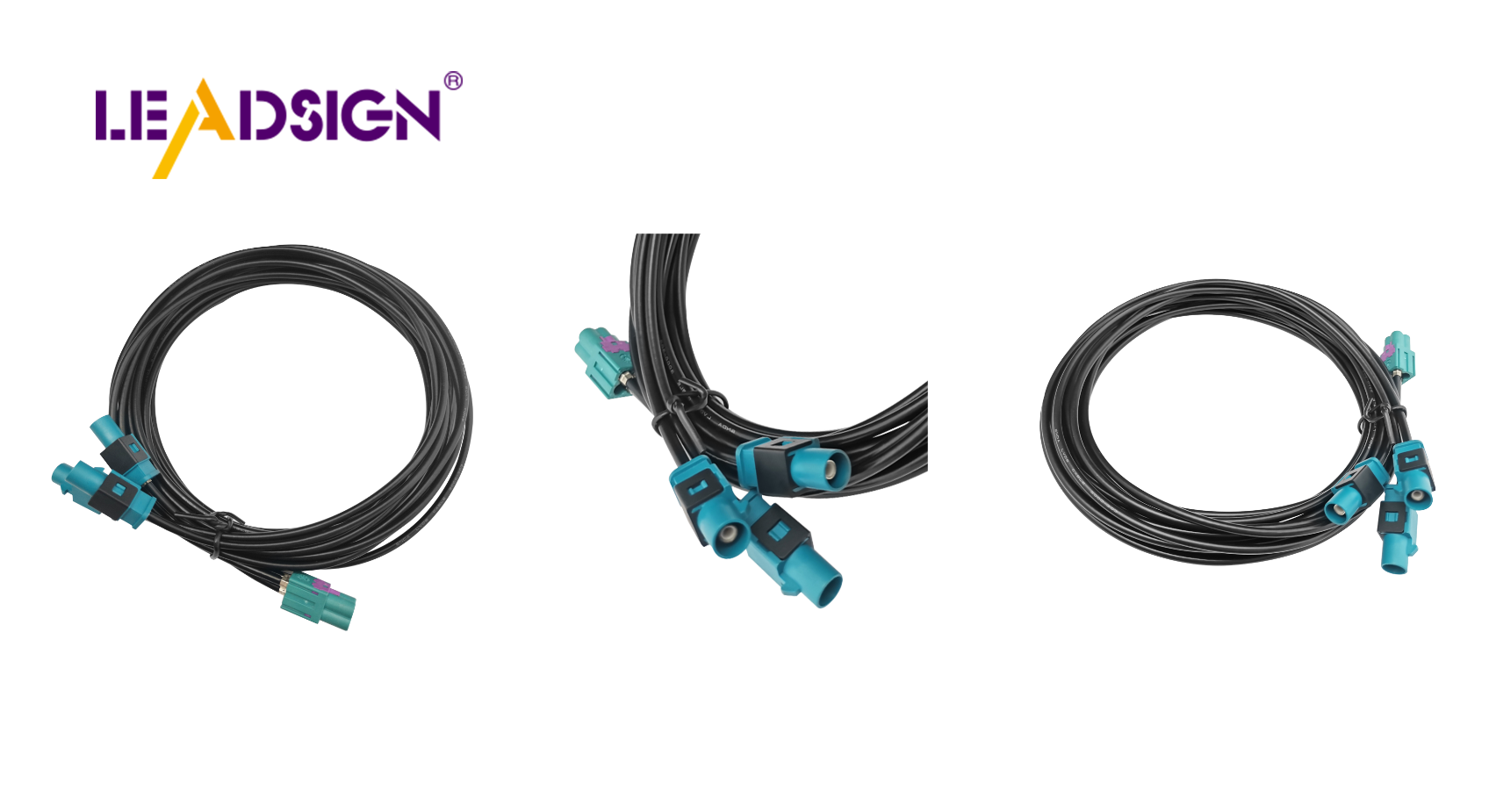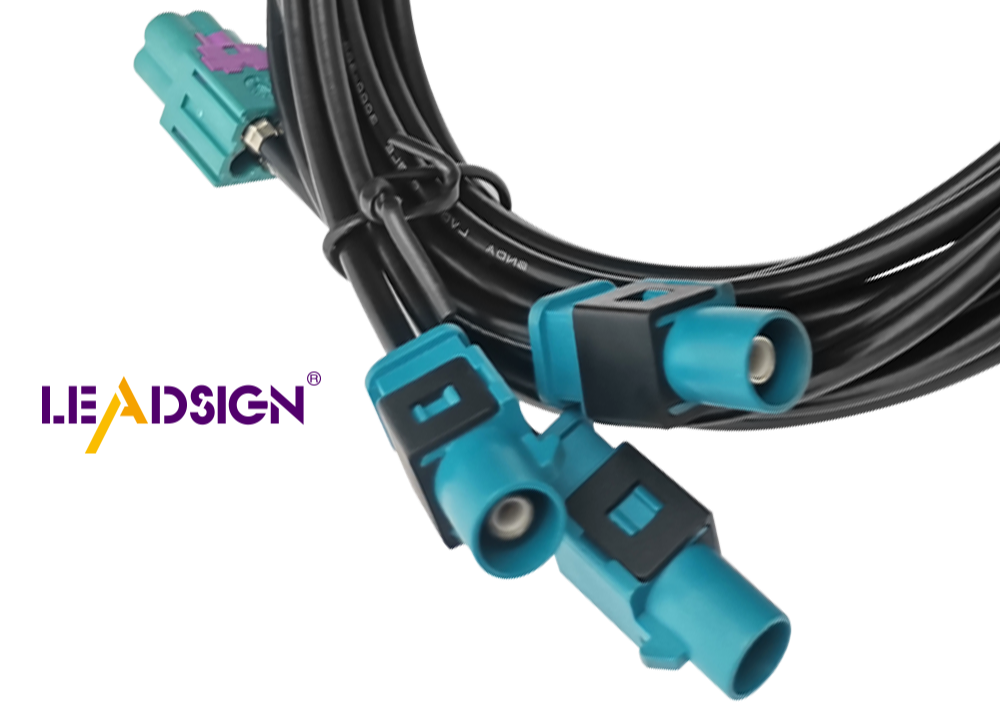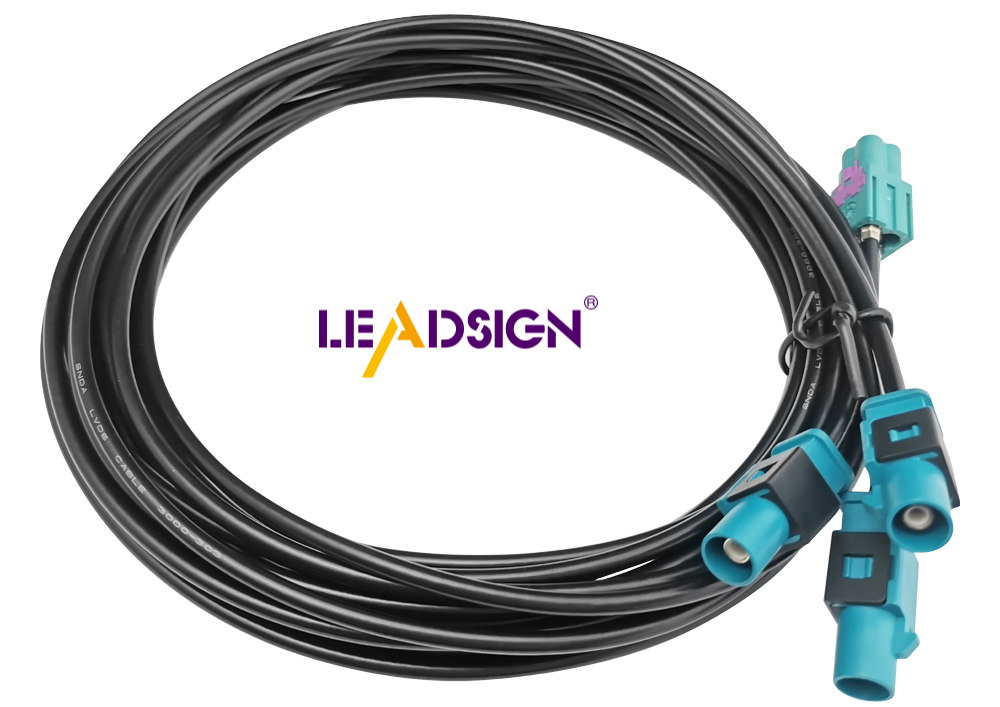How to Easily Install Automotive Wiring Connector Types

Correctly installing car wiring connectors, including various auto wire connector types, is crucial for the optimal performance and safety of your vehicle. It is essential to understand the different types of connectors available, such as crimp connectors, soldering options, and waterproof varieties. By selecting the appropriate connector type for your car's wires, you can ensure strong connections and enhance the overall functionality of your vehicle. This not only reduces the risk of electrical issues but also helps prevent costly repairs and potential accidents.
Understanding Auto Wire Connector Types

When you start learning about car wiring, knowing the different auto wire connector types is important. Each type has its own job and benefits. Let's look at some common ones.
Crimp Connectors
Crimp connectors are often used in cars. They make a strong connection by squeezing the connector onto the wire.
Applications and Benefits
Crimp connectors are great when you need a fast and secure link. You see them in chassis connections, splice connections, and inline connectors. They are cheap and last long, making them popular for car fans.
Durability: Crimp connectors handle shaking and tough conditions.
Ease of Use: You can put them on quickly without special skills.
Cost-Effective: They are a good choice for saving money.
Recommended Crimp Sizes
Picking the right crimp size is key for a solid connection. A 5/16-inch crimp is usually best for strength. This size balances holding power with easy setup.
Soldering Connectors
Soldering connectors give a lasting way to join wires. They bond strongly by melting solder to connect wires.
Applications and Benefits
Soldering works well where you need a strong, lasting link. It's used where space is tight, needing small connections.
Strong Bond: Soldering makes a firm and lasting link.
Compact: Good for small spaces where others don't fit.
Reliable: Provides great electrical flow.
Soldering Techniques
For best results, use these soldering steps:
Clean the Wires: Make sure wires have no dirt or rust.
Use the Right Solder: Pick solder with rosin core for better flow.
Apply Heat Evenly: Use an iron to heat wires evenly before adding solder.
Waterproof Connectors
Waterproof connectors keep water away from connections, stopping rust. They help your electric systems last longer by keeping water out.
Applications and Benefits
These work well outside or where water might get in. They're used in cars like navigation systems.
Weather-Resistant: Stops moisture and weather damage.
Versatile: Works in many places, like self-driving systems.
Long-Lasting: Makes electric links last longer.
Sealing Methods
To keep water out, follow these tips:
Use Seals: Put seals on wires before crimping pins.
Heat-Shrink Tubing: Add tubing over links for more safety.
Proper Installation: Align parts correctly and secure them well.
By knowing these types of auto wire connectors, you can choose wisely when fixing your car's wiring. Whether using crimp, soldering, or waterproof ones, each has special perks that help with car projects.
Getting Ready to Install
Before you start putting in auto wire connector types, get ready first. This makes the setup easy and the connections strong. Here’s what to do.
Taking Off Insulation
Removing insulation from wires is important. It shows the wire for connecting, making sure it links well.
Needed Tools
To take off insulation, you need good tools. A wire stripper is very helpful. It takes off insulation without harming the wire. For thicker wires, use a utility knife too. Keep your tools in good shape to avoid problems.
Wire Stripper: Key for careful stripping.
Utility Knife: Handy for thick wires.
How to Strip Right
Using the right way is as important as having good tools. Here’s how:
Measure Length: See how much insulation to take off. Usually, half an inch works.
Place Wire: Put the wire in the right spot on the stripper.
Press Gently: Squeeze handles softly to cut insulation.
Remove Insulation: Twist a bit and pull it off neatly.
These steps get your wire ready for different auto wire connector types.
Picking Right Tools
Choosing correct tools for connectors is crucial. Each connector type needs special tools for a safe connection.
Crimping Tools
For crimp connectors, a crimp tool is needed. It makes sure wires fit tightly with connectors. Different connectors might need different crimpers, so check details.
Weather Pack Crimper: Great for Weather Pack connectors.
Deutsch Compatible Crimper: Good for Deutsch connectors.
Meri Pack Crimper: Best for Meri Pack connectors.
These tools give strong crimps, ensuring they last long and work well.
Soldering Gear
If using soldering connectors, get proper soldering gear. A soldering iron and solder are main tools needed. They make wires stick together strongly.
Soldering Iron: Heats solder to join wires.
Rosin Core Solder: Helps smooth flow and firm link.
By picking right tools, you make sure your auto wire connector types are put in properly, giving best performance and safety.
Installation Process

Let's learn how to connect wires using different auto wire connector types. This part will show you crimping, soldering, and sealing with heat-shrink tubing.
Crimping Process
Crimping is a common way to join wires. It makes a strong link.
Step-by-Step Guide
Prepare the Wire: Take off the wire cover. Make sure the bare wire is clean.
Select the Connector: Pick the right crimp connector for your wire size.
Insert the Wire: Push the wire into the connector until it touches metal.
Crimp the Connector: Use a crimper to squeeze tight around the wire.
Inspect the Connection: Check if it's secure; it shouldn't pull out easily.
Common Mistakes to Avoid
Using Wrong Tool: Always use a crimper made for your connector.
Improper Wire Insertion: Ensure full insertion before crimping.
Over-Crimping: Too much pressure can break the connector or wire.
Soldering Process
Soldering joins wires by melting solder for a lasting bond.
Step-by-Step Guide
Clean Wires: Remove dirt from wire ends.
Twist Wires Together: Twist exposed ends for better hold.
Heat Wires Evenly: Use an iron to heat wires evenly.
Apply Solder: Touch solder to hot wires, let it flow over joint.
Cool Joint Naturally: Let solder cool without moving wires.
Safety Precautions
Ventilation Needed: Work in airy space to avoid fumes.
Protective Gear On: Wear glasses and gloves for safety.
Handle Carefully: Be careful with hot iron to avoid burns.
Sealing with Heat-Shrink Tubing
Heat-shrink tubing protects connections well.
Application Techniques
Cut Tubing Right Size: Cut tubing longer than joint length.
Slide Over Joint First: Slide tubing on one wire before connecting.
Shrink Tubing After Connecting: Slide over joint, heat until snug fit.
Ensuring Secure Seal
Even Heating Important: Heat evenly for proper shrinkage.
Check No Gaps Exist: Ensure no gaps between tubing and wire exist.
Use Good Quality Tubing Only: Match tubing size and conditions needed.
By following these steps, you can install various auto connectors well. Whether crimping, soldering, or sealing, each way keeps your car's wiring safe and reliable.
Troubleshooting and Best Practices
When working with auto wire connector types, problems can happen. Knowing how to fix them and using good habits saves time and keeps connections strong. troubleshooting tips
De-pinning and Re-pinning Connectors
Sometimes, wires need removing or replacing in a connector. This is called de-pinning and re-pinning. Let's see what tools and steps are needed.
Tools and Techniques
To de-pin and re-pin, special tools are needed. A de-pinning tool is very important. It helps take out wires without breaking the connector. A small screwdriver or needle-nose pliers might help with stuck pins.
Find Connector Type: Different connectors need different tools.
Use Correct Tool: Put the de-pinning tool in the connector to free the pin.
Carefully Pull Wire: Take out the wire gently to avoid harm.
Re-pin Carefully: Put new wire in place until it clicks.
Common Issues and Solutions
Problems may come up during this process. Here are some fixes:
Stuck Pins: If a pin won't move, check if you're using the right tool. Use gentle force to not break it.
Loose Connections: Make sure the pin is fully in place and locked tight for safety, especially where there is shaking.
Testimonial: "A secure lock keeps connectors safe, especially when there's lots of movement."
Summary of Best Practices
Using best practices makes sure your auto wire connector types work well. Here’s a quick look at key points.
Ensuring Reliable Connections
Good connections are crucial for your car's electric system. Here’s how:
Use OEM Connectors: They fit well and work reliably, cutting down on repairs.
Testimonial: "OEM connectors ensure electrical links are correct and dependable."
Regular Inspections: Check often for wear or rust signs; fix issues fast to stop failures.
Maintenance Tips
Taking care of connectors makes them last longer. Here’s how:
Clean Often: Dirt affects connections; use a soft brush or air to clean.
Keep Dry: Use waterproof connectors or heat-shrink tubing against moisture.
Avoid Overloading: Make sure wires can handle their current; too much can cause overheating.
By following these steps, you keep your auto connectors reliable and efficient. Whether fixing pins or maintaining them, these tips help keep your car's electric system running well.
Now you know how to put in automotive wiring connectors easily. First, get your wires ready. Then, pick the right connector. Lastly, follow the steps carefully. Doing this makes sure your connections are strong and help your car work better.
Tip: Doing these steps not only makes things work well but also saves energy, helping the environment.
Check and take care of your car's electric system often to keep it working great. Enjoy wiring!
See Also
Essential Overview of HSD Connectors in Auto Sector
Navigating Fakra Connectors in Honda Cars
Exploring Ford's Fakra Connector Guide

